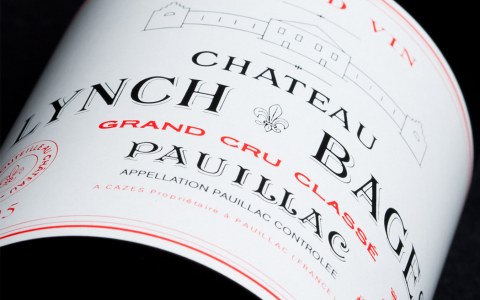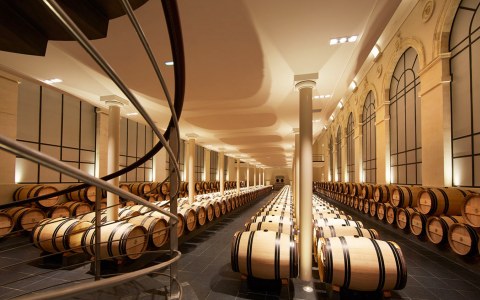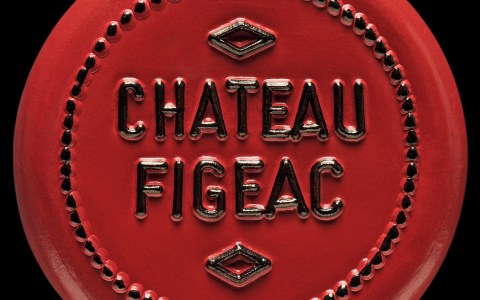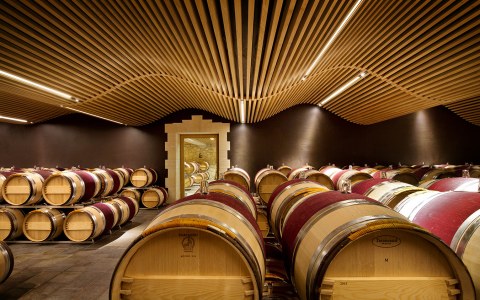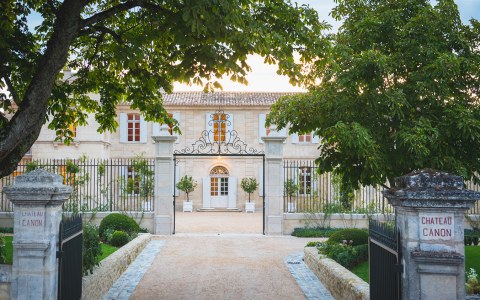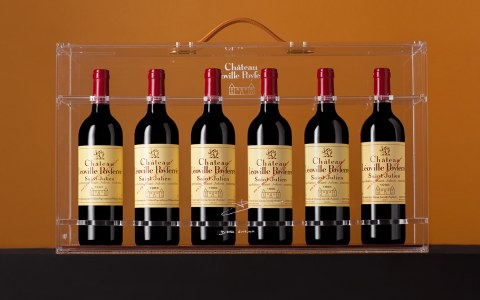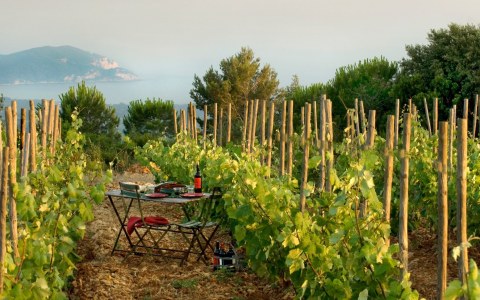Classified as a 5th Growth Grand Cru Classé in 1855. Located just outside the town of Pauillac on a gravel ridge looking down over the Gironde estuary. With the arrival of Jean-Charles Cazes to head the estate in 1934, the Lynch-Bages style was sealed. An innovative winemaker, he was known for taking risks and often being the last to harvest in Pauillac. From 1945 onwards, the fame of the château emerged thanks to a series of great vintages. The Cazes family heritage continues today. View current inventory: Collector Wines Visit the winery website: Château Lynch-Bages
Ranked a Premier Grand Cru Classé (A) in the Classification of Saint-Émilion wine. The slopes of Chateau Pavie were first planted by the ancient Romans in the 4th century. It’s named for the orchards of peaches (“pavies”) that used to stand there. The 100 acres vineyard is planted with 60% Merlot, 25% Cabernet Franc and 15% Cabernet Sauvignon. This represents a change in the vineyard with less Merlot and more Cabernet Franc. View current inventory: Collector Wines Visit the winery website: Château Pavie
Ranked a Premier Grand Cru Classé (A) in the Classification of Saint-Émilion wine. Cheval Blanc has a long and elaborate history that dates back to the 4th century. The most prestigious part of the estate’s history can be said to date from 1832 when Jean-Jacques Ducasse purchased the core of the present-day estate. The estate consists of 45 different plots each with a unique soil type – and thus are treated like separate vineyards. View current inventory: Collector Wines Visit the winery website: Château Cheval Blanc
Ranked a Premier Grand Cru Classé in the Classification of Saint-Émilion wine. Originates from an ancient estate that traces its roots back to the 2nd century when a Gallo-Roman villa was built on the estate and named after a Figeacus. Unlike many other Saint-Emilion vineyards, the soil contains quite a large quantity of gravel. Because of this, the estate has majority Cabernet Sauvignon and Cabernet France vines, unlike the typical Merlot-dominant estates of the appellation. View current inventory: Collector Wines Visit the winery website: Château Figeac
Ranked a Premier Grand Cru Classé (A) in the Classification of Saint-Émilion wine. The name refers to the three Angelus bells audible from the vineyards, coming from the chapel at Mazerat, the church in Saint-Émilion. The family behind Château Angelus has one of the longest histories in the appellation but the story of the estate begins in 1909 when Maurice de Bouard de La Forest inherited the vineyard owned by his ancestors. Today the winery is run by the 8th generation of the family. View current inventory: Collector Wines Visit the winery website: Château Angélus
Ranked among the Premiers Grands Crus Classés B of Saint-Émilion. Owned by the Wertheimer family since 1996. Originally a small vineyard planted around the Church of St-Martin by Jean Biès in the early 18th Century, the estate was named Clos St-Martin. In 1760 Jacques Kanon purchased the land. A true clos, the original 30-acre vineyard was encircled by a wall, which Kanon expanded by acquiring seven small surrounding vineyards. View current inventory: Collector Wines Visit the winery website: Château Canon
Winemaking at Léoville dates to 1638 at this 2nd Growth Grand Cru Classé estate. Château Léoville Poyferré was established in 1840 when Baron Jean-Marie de Poyferré added his name to Léoville. Since 1920, the estate has been nurtured by the Cuvelier family. Dispersed over 200 acres of Saint-Julien, the vineyards reflect all the richness and diversity of the appellation. Over 60% of the land is planted with Cabernet Sauvignon, with vines averaging 40 years old. View current inventory: Collector Wines Visit the winery website: Château Léoville-Poyferré
Winemaking dates to the 14th century at this beautiful estate. Classified as a 3rd Growth Grand Cru Classé in 1855. High gravel content soil – some of the best in the left bank. 60% of the vineyards are planted with Cabernet Sauvignon, 32% Merlot, 5% Cabernet Franc and 3% Petit Verdot. Some old vines on the property reaching 70 years of age, mostly Cabernet Sauvignon. In 1995, the château was bought by Eric Albada Jelgersma, who owns neighboring Château du Tertre, who invested in modernization. View current inventory: Collector Wines Visit the winery website: Chateau Giscours
In the late 18th century, Peyrat-Fourthon was a well-known hunting lodge. The mayor of 1834 was the first to start grape cultivation on the estate. Hervé Godin acquired the Château in 1998 and renovated the cellar to combine modern winemaking techniques with age-old traditions. Since June 2004, owner Pierre Narboni has grown the vineyards from 12 to 20 hectares and it has quickly become one of the most advanced vineyards in the Haut-Médoc. A unique aspect of the collection is the kosher wine selection. The grapes are treated only by rabbinical staff – under the control of Beth Din of Paris …
Discover the noteworthy Domaine de la Bégude. Located at the highest point of the Bandol appellation, the exceptional estate overlooks the Mediterranean Sea and benefits from an ideal mix of hot sunny days and nights. This outstanding terroir combined with the winemaking heritage of Guillaume Tari, 7th generation of winemakers raised at Château Giscours in Margaux, enables to produce unique and elegant wines. The particularity of La Bégude is its extraordinary diversity of soils and expositions. This mosaic of vines looks like a painter’s color palette. The Domaine is also certified organic and produces red, rosé, and white wines belonging to …
